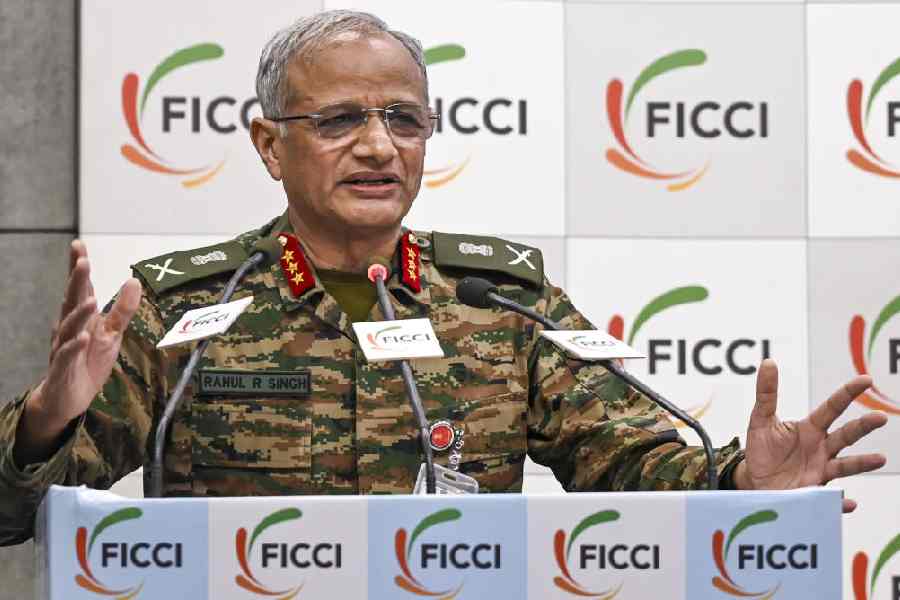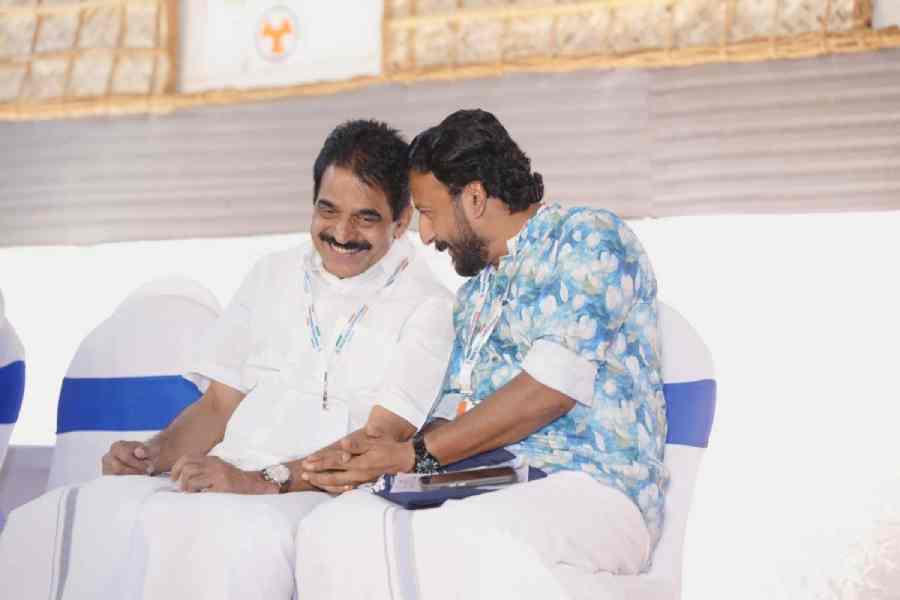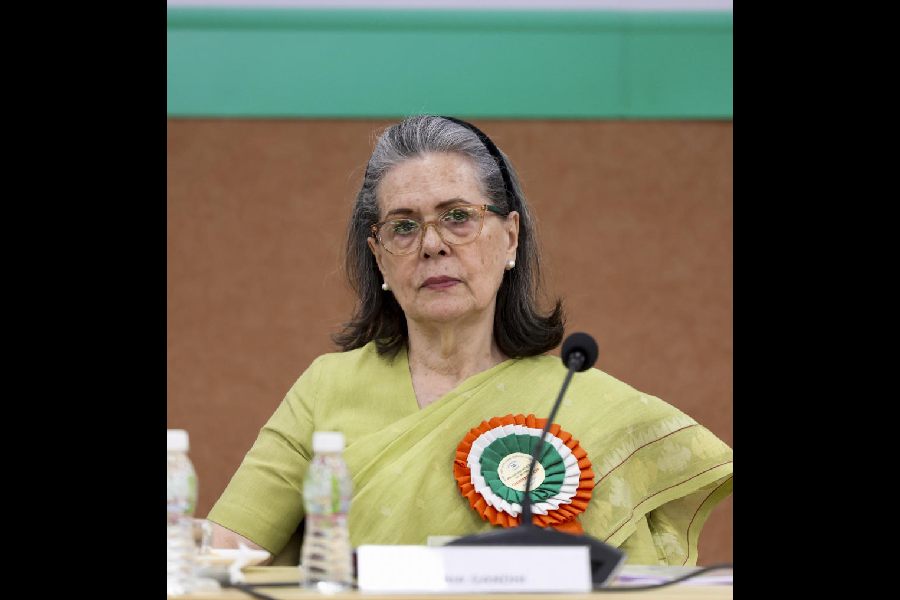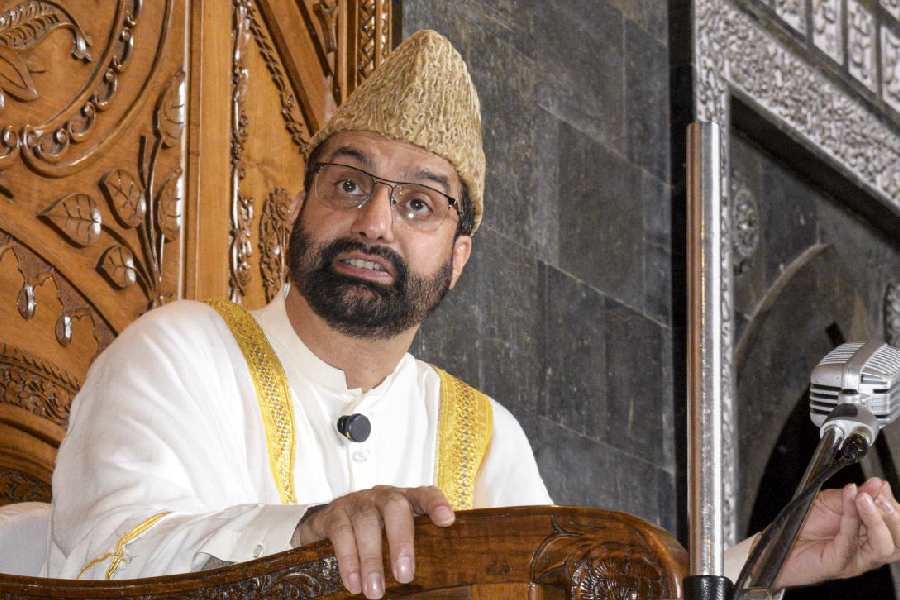 |
 |
| Sachin Tendulkar and Sunil Gavaskar |
Calcutta: Little Masters Sunil Gavaskar and Sachin Tendulkar got together on the same platform and spoke to CNN-IBN Editor-in-Chief Rajdeep Sardesai in Chandigarh the other day.
The interview will be telecast on CNN-IBN for the first time on Friday at 8pm and 11.30pm.
The following are excerpts from the transcript made available to The Telegraph:
On not looking at the scoreboard while batting
Gavaskar: I was not interested in how many runs I was batting on. I was only interested in how many runs I got after I got out… I had a vague idea, for the simple reason, because if you are on 46, and you know you need four runs to get to a 50, you might play a shot to a ball which you normally wouldn’t in just trying to get that boundary. If you are on 96, you might play a shot that would get you out. So the thing to do would be to forget on how many runs you are and then only see your score when you got out.
Tendulkar: No, I do look at the scoreboard.
Approach to run making
Gavaskar: I did it in sessions, not in 10s and 20s. Again you are putting yourself under pressure when you are looking at any target. As I said, it could be that you are on six, and you would say let me go to 10 and my next target will be 20, so you are putting yourself under that pressure. You just play by sessions, so you know that you have to play two hours before lunch, two hours until tea and then one and a half hours. So if you did that, at the normal scoring rate, you knew you might get your 100 somewhere.
Tendulkar: I play a little differently. A lot depends on my rhythm, my bat swing and if I feel everything was going well on that particular day, then I would sometimes choose the bowlers, like these are the bowlers that I am going to go after. I felt that in patches you score plenty of boundaries, and then all of a sudden, you get these strike bowlers bowling disciplined lines and you need to just hold yourself back a bit and set different targets. There have been occasions where I have gone into the field with the frame of mind that I am going to bat at least for a session and then look at the next session to attack. Sometimes, in the first session I tell myself that I am just going to try and hang in there, try and spend as much time as possible. It varies from match to match.
If players can be run machines while having different approaches to the game
Gavaskar: Yes, there are different methods to getting runs. It also depends on the kind of game that you have. You could be a front foot player, you could be a back foot player, you could be good on the off-side, your grip might be suited to an on-side game. There are different methods of getting runs and in the Indian team itself you have got Sachin, you have got VVS, you have Sehwag, they all have different methods of dealing with same kind of a delivery.
If you were inspired by Gavaskar during the early days
Tendulkar: I had two heroes while I was growing up and they are still my heroes, Mr. Gavaskar sitting next to me and Vivian Richards. I felt I would want to grow up and play cricket like my heroes. The dream was that every time any particular thing happened in school matches or practice sessions, I would say, “Gavaskar never did that”. Even today that happens.
If Sachin is closer to Vivian Richards when it comes to the art of batsmanship
Gavaskar: Yes, particularly when he goes down the track to the spinners… his back-lift is so much like Richards, the way he uses his wrists… When he does that, I say to myself, “Oh this is so much like Vivian Richards…” There is a lot of Richards in him except one thing. Vivian used to plonk his front foot there and whip everything down the leg side, Sachin is classically correct, he would play mostly on the off-side.
Do you want to bat like Sachin Tendulkar sometimes, especially in one-day cricket?
Gavaskar: Look, this is what happens with the former cricketers. They have unfulfilled aspirations, dreams and when the next generation comes and does so, there is a great feeling of enjoyment. I enjoy watching Sachin, Sehwag bat, because they do the kind of things that I wanted to do but was not able to do. Probably it was a mental block.
The one quality of Sunil Gavaskar that always struck you as a batsman
Tendulkar: It’s everything about him because growing up as a budding cricketer and wanting to play for India, it was the ultimate dream and you had the ultimate player whom we actually had this pleasure of watching from close … The concentration and the determination, the dedication, the confidence to play fast bowling.
If you ever went to Gavaskar over the years for special tips
Tendulkar: Right from my Ranji Trophy days. Before my Ranji Trophy debut he presented me his leg guards… So right from those days I have always shared my thoughts with him and he has shared his thoughts with me. It has been of tremendous help.
On your first impressions of Sachin… If you thought one day this boy would be a part of this elite 10,000 club, and go on to score 12,000 runs?
Gavaskar: I think yes. I have to be absolutely honest and say that I thought that if he was not going to be beset by injuries, he was going to have all the batting records in the world. Please ask my wife what I felt when I first saw him bat. I had heard so much about him, I went and saw him from a corner because I didn’t want him to be conscious... So I was hiding in a corner and I watched him bat. I went home and I said to my wife that I had seen something really special. She said, you have never said this about any cricketer before. And I can tell you she has followed his career as avidly as any other Indian.
The one quality needed to become a run-machine
Tendulkar: It’s the desire and it’s extremely important to dream big. Then the passion because I grew up loving the sport and I cannot imagine my life without cricket and if anyone had given an option to choose, I would choose cricket 100 out of 100 times.
One thing about Gavaskar’s game which you consciously tried to adopt
Tendulkar: It is obviously the concentration and the discipline. You have to be disciplined, to have an organised mind and once your mind is organised, it all just follows.
Do you have a set schedule before you go out to bat?
Tendulkar: No, not really. I go by my instincts. There are times when just before going to bat I feel like listening to some music. Opening in one-day cricket is different from batting in the middle order in Test cricket. In one-day cricket I can be still listening to music and as soon as the umpires are out and the fielders are out, I remove my ear-phones and keep them aside and just walk in to bat. But in Test cricket, I don’t know at what time I have to walk in so it’s difficult and it requires a different preparation, physical and mental.
The one thing that struck you about Sachin through these 20 years
Gavaskar: Balance, which is the most important thing. He has got balance on the field and that is helped by a great extent by balance off the field. Without balance, so many potentially great cricketers have been lost. It’s the balance off the field which is so important and to have that balance off the field you need people around you who will make sure that you have your feet on the ground. The family becomes such an important aspect in keeping that balance.
The role played by your father
Tendulkar: In cricket I had different role models, and in my life I had my father as my role model. I always feel if I can be half as good a person as my father was, I am on the right track.
Did you raise your game Sachin, for example, when you played a Shane Warne or a Glenn McGrath?
Tendulkar: I wish I could have done that.
On destroying Warne at his peak
Tendulkar: It doesn’t matter who the opposition is. It is about cricket and whenever there is a bat in hand, I want to give my best. I am not there to fool around, I am not there to make any compromises, I just want to go out and give my best.
Do you believe it’s fair to compare a Tendulkar with a Gavaskar?
Gavaskar: Not at all, it’s unfair because what Sir Don Bradman said holds true. He said that a champion in one era would be a champion in another era. So I don’t think comparisons are required. Comparisons are good for the fans and the followers of the game and I don’t think cricketers ever indulge in comparisons. They might go on a nostalgic trip and say that during our days things were tougher, but I don’t think cricketers often compare.
On what’s tougher — facing four West Indian fast bowlers in the Seventies or playing a mix of one-day, Twenty20 and Test cricket today?
Tendulkar: Cricket is a difficult game and hats off to Mr Gavaskar how he managed to play four genuine quick bowlers without a helmet.
Gavaskar: And nothing inside to protect (points to his head and laughs).
Do you also subscribe to the view that if you are a great player in one generation you are a great player always?
Tendulkar: Yes I agree. Once you are a great player in a particular generation, that player knows how to adjust to different conditions. In every generation, you play in so many different conditions, on many different pitches and against many different bowlers and all those require adjustment. In the end, its about adjustment and if you can adjust, you can play in any generation.
If it was tougher for Sachin when he made his debut at 16
Gavaskar: Yes, harder because I do believe that a batsman needs a little more experience before coming at the international level. You may throw a quick young bowler into the fire straightaway at the age of 16-17 because he has the strength and energy but I believe young batsmen are better off having a couple of seasons at the domestic level before they are put at the international level.
On the best innings ever
Tendulkar: I am always happy and never satisfied; I would say my favourite innings would be in 1992 against Australia when I scored 100 in Perth. That is when I felt that, yes, now I am here to play cricket anywhere in the world, and confident enough to tackle any bowling attack.
Gavaskar: It was the innings of 57, the one at Old Trafford against England. I had never played on the green pitch, and it was a green pitch there was good seam bowling, there was a bit of a drizzle which was freshening the pitch and you couldn’t go off the field because of the drizzle.
The batsman you would pick to bat for your life
Gavaskar: The closest thing to batting perfection is Sachin Tendulkar, no question about that.
Tendulkar: It goes without saying, I would pick him because he is one of my two batting heroes. One hero Richards played attacking cricket and the other opened the innings against the best fast bowling attack ever and delivered consistently.
If there was a difference between being an opening batsman and scoring 10,000 runs and a middle-order batsman and scoring 12,000 runs
Gavaskar: Possibly because the new ball is a little bit harder, it moves a little bit more, so you take a little more time to settle down and to wear the bowler out so maybe that’s the thing. But, then again, if you are a Virender Sehwag, it doesn’t make any difference as the ball in fact goes quicker to the boundary off his bat.
Whether there’s a connection between being short and being a great batsman... from the Don to Sachin
Gavaskar: Well, yes… sure. I think it has something to do with the force of gravity. Shorter people, perhaps, find it easier to be more balanced and move back and forward in the crease.
The final question: What do youngsters need to do to be part of the 10,000 club?
Gavaskar: You have got to have focus, determination. You have got to have discipline ... the three ‘Ds’ that I keep talking about ... discipline, dedication and determination. Without that you will never get anywhere close and I think Sachin embodies all those qualities that are required not for a 10,000 man, but hopefully for a 14,000 man.
Tendulkar: Couldn't agree with him more because we actually followed his footsteps …..










